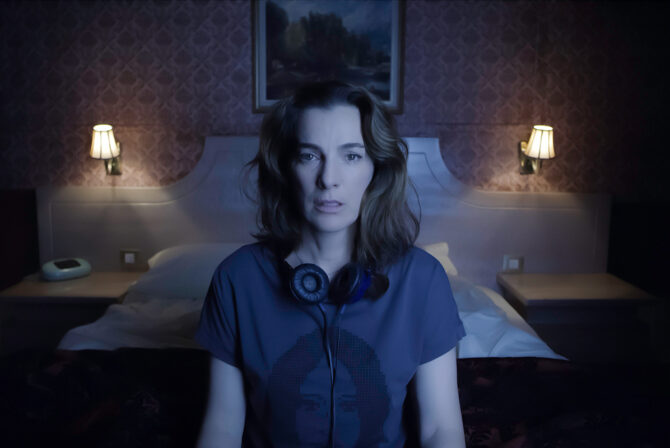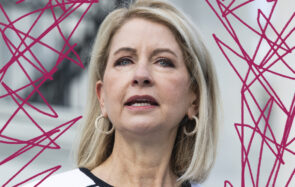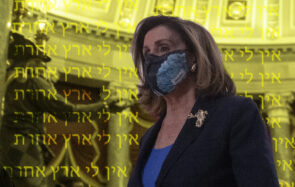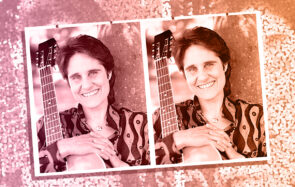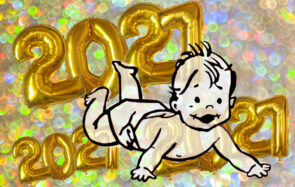作为一个白色,阿什肯纳齐犹太女孩在80年代和漫长的岛屿上90年代,直发始终是目标。不幸的是,它总是略微遥不可及。
Of course, in my suburb, there was no shortage of salons offering blowouts as well as semi-permanent to permanent chemical straightening — all of varying and questionable安全水平。还有无数,昂贵的家庭住宅对手承诺将自然卷发变成了一个光泽,摇晃,跑的手指的鬃毛。
And while I tried many of these options (although stopped short of chemicals), to my dismay, my very thick hair seemed to get curlier as I got older, transforming from subtle waves to a coarser, frizzier texture in middle school. Starting in 7th grade, I woke up at 6:11am (yes, I remember the minute) to spend an hour blow drying it straight every single day. Without the benefit of YouTube beauty tutorials or Instagram influencers, I had no idea that this regimen was counterproductive: My daily blowout was frying我的头发。然而,我的卷发和我 - 我们都是犹太人,虽然当然不是我所有的犹太朋友都有卷发 - 每天都会痴迷地监测湿度和降水水平,从而准备不可避免地是不可避免的大气撤消我们广泛的,染色的努力。
I suppose I always understood that straight hair was associated with a particular form of country club whiteness. My theory was reinforced when my family moved, when I was halfway through中学距离波士顿北部的预科郊区,配有实际的准备校园校园锚定风景如画的市中心。在那里,作为一个小小的犹太学生群体之一,我的卷发 - 直到那个点只是一个人群中的一个卷曲的头 - 成为了令人欣赏的对象。
By this stage in my hair journey, thanks to the encouragement of curly-haired bunkmates at my犹太夏季营地,我有finally学会了拥抱我的头发的倾向,并采用了一个卷曲的积极的发型。然而,在我新的贵族环境中,那里的样子de rigueur.是一个金发碧眼的高马尾辫,用一个完美的柔和的罗缎弓,我的卷发画得很漂亮,但不舒服的反应。陌生人会在公共场所触摸我的头发,拉动我的卷发,看看它们反弹。朋友的父母会惊讶地说,我的头发是如此的“民族”。(我假设句子,在他们的头上,结束了,“为白人”。)coup de grace当我为高级年鉴被投票“最好的头发”时,我认为我的头发是少的恭维和更多的眨眼认可,different. (It wasn’t totally lost on me that my co-awardee in the best hair category was one of the very few Black students in our class, who wore his hair in a proud Afro.)
I continued to wear my hair curly throughout college. By my mid-20s, however, asa young lawyer,我切断了头发,寻求更加成熟和雌雄同体的外观。我不努力鼓励我的卷发,也没有试图拉直它们。这种最新的蔑视行为是努力拒绝完全长发的女性理想,我根本不再思考卷发。
This all changed dramatically about 10 years later, in 2019. Through my job as a civil rights government lawyer, I was part of a multi-racial group of coworkers drafting a policy文件for New York City that would explicitly clarify that discrimination on the basis of natural hair — specifically, hairstyles most commonly associated with Black people — is unlawful race discrimination under local law.
值得注意的是,法院最近发现联邦民权行为'对竞争歧视的保护确实如此not保护一个黑人,因为他们的位置,他们的辫子或其天然发纹理而受到了工作场所的歧视。换句话说,根据法院的说法,一个黑人受到保护基于歧视在皮肤的颜色,但不是基于从头发中生长的头发。
As we worked on the policy document, friends and colleagues shared personal stories about being forced to straighten or chemically alter their natural hair to appear more “professional” — an experience all too common among Black women. And hair discrimination is not limited to the workplace; heartbreaking stories were cropping up in schools, too. Students were being told they can’t participate in学校运动那go to prom那walk in graduation那or evenstart the school year with their peersbecause of their hair.
在大多数情况下,这些孩子被拒绝,因为他们的学校的美容标准明确禁止黑发风格,或者因为某些“中性”的美容标准是不平等的黑人学生. Regardless of the details, these grooming standards exist in the first place because we have, as a society, internalized what the ideal student, and the ideal worker, should look, sound, and dress like — and that is white.
幸运的是,作为民间权利问题的正式认可似乎是迅速;在我的办公室于2019年2月发布其政策后,第二个城市和各国通过法律。2020年,众议院通过联邦禁令hair discriminationand it was introduced in the Senate.
这种识别头发歧视的运动并没有源于我的政府机构 - 这是多年来不懈努力的结果Black natural hair advocates,法律学者那文件arians那beauty experts等人要求识别和庆祝黑色天然头发和黑色发型。(自然发型有一个令人难以置信的历史,我鼓励你阅读更多信息here.)
Of course, my experience as a whitecurly-haired Jewish女人不一样,很多黑人那including, of course, Black Jews and biracial Jews. For example, I never feared being suspended from school or losing a job because of my hair texture. Nonetheless, when I was young, I spent so much time, energy, and money to conform — and then, when I chose not to, I felt like I needed to explain my decision to keep my hair in its natural state. But the natural hair movement — which has been bolstered considerably in recent years, on platforms like YouTube and Instagram — has helped empower me to celebrate my curly texture again.
This is important because it isn’t just about personal style — it’s about changing attitudes and combating oppressive standards of beauty and professionalism for future generations. In addition to being a lawyer, I’m a mom of two: a 4-year old with mythically stick-straight hair, and a 2.5-year old with a卷发的CaCophony.. My toddler often refuses to let me pull her hair up, and when it’s “down” it goes in all directions, framing her face with a halo of tight ringlets and adorable frizz.
我努力让她拥抱她的卷发。如此之多,所以她开始介绍自己:“我的名字是弗里达。我的头发是卷曲的。”毫无疑问,天然发型使我们卷发的白色人更加允许和信心,以拥抱我们的卷发和偏离白色,Eurocentric normsof beauty.
Inspired by my daughter, 13 years after I chopped off my own curls, I’m growing them out again. I’m extremely grateful to the natural hair movement for celebrating curly hair textures, encouraging me to celebrate my curly texture; and for inspiring me to model curl-positivity formy toddler,学会拥抱自己的真实和独特的美丽,并拒绝过去的欧洲中心限制性规范。这些是我希望我们能够在孩子身上灌输的课程,一次一个林。
Header image by frimages/Getty Images

